Photograph above: Conifer Blueing Bracket (Postia caesia) © Helena Crouch
Leaders Alan Rayner & Helena Crouch
Four members met on a sunny but chilly autumn morning following a long warm dry spell ended by heavy rain in the 2-3 days previously. We were anxious whether we would see many fungi in view of the dry spell, but our fears were soon eased when we came across a group of pristine Common Puffballs (Lycoperdon perlatum) with mycelial cords radiating out into underlying leaf litter.
Nearby were some specimens of Common Rustgill (Gymnopilus penetrans) and the first of many specimens of Ochre Brittlegill (Russula ochroleuca) nestling within a bed of Bank Haircap moss (Polytrichastrum formosum). We marvelled at a patch of the sinister Enveloping Crust (Sebacina incrustans) which was spreading across the forest floor, engulfing everything in its path.
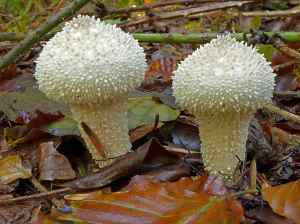
Common Puffballs (Lycoperdon perlatum) at Stockhill © Helena Crouch
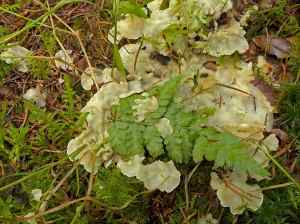
Enveloping Crust (Sebacina incrustans) © Helena Crouch
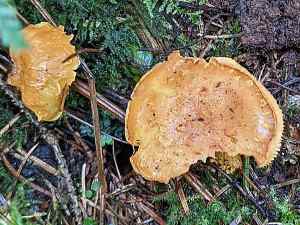
Flaming Scaly-cap (Pholiota flammans) at Stockhill © Helena Crouch
As we proceeded along a narrow woodland path, we enjoyed the luxuriance of some of the larger mosses and liverworts, in varied textures and shades of green, carpeting the woodland floor. These included Catherine’s Moss (Atrichum undulatum), Common Tamarisk-moss (Thuidium tamariscinum), Hart’s-tongue Thyme-moss (Plagiomnium undulatum), Waved Silk-moss (Plagiothecium undulatum) and Greater Featherwort (Plagiochila asplenioides).
We continued to find interesting fungi, including Yellow Stagshorn (Calocera viscosa), Bay Bolete (Imleria badia) and perhaps our most notable find of the day, Flaming Scaly-cap (Pholiota flammans), an uncommon species, especially in southern England.
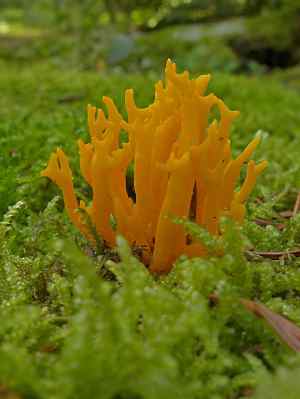
Yellow Stagshorn (Calocera viscosa) at Stockhill © Helena Crouch
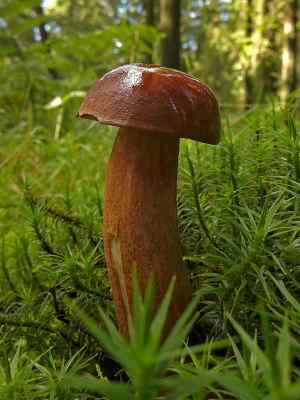
Bay Bolete (Imleria badia) at Stockhill © Helena Crouch
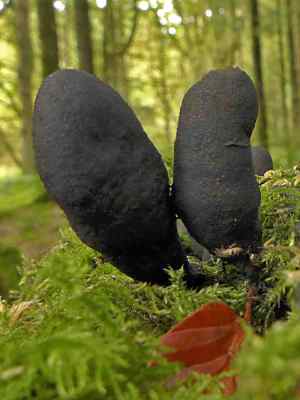
Dead Man’s Fingers (Xylaria polymorpha) at Stockhill © Helena Crouch
Emerging under some large beech trees, we found an extensive group of Geranium Brittlecap (Russula fellea) and debated whether it smelled of pelargoniums or stewed apple. We also found a smart Wood Woollyfoot (Gymnopus peronatus) and examined its mycelium radiating out into and bleaching the leaf litter, as well as a small Beechwood Sickener (Russula nobilis) and the first of several specimens of Common Earthball (Scleroderma citrinum).
We enjoyed lunch in a shady glade, cushioned with soft mosses including Neat Feather-moss (Pseudoscleropodium purum) before beginning to wend our way back towards the car park, noticing as we did so a large group of Dead Man’s Fingers (Xylaria polymorpha) and, pictured at top of the page, an intensely pigmented Conifer Blueing Bracket (Postia caesia). It had been a colourful and sensuous day.
AR & HJC


Recent Comments